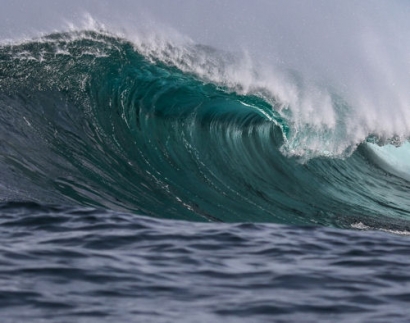
The new tool will move Seabased toward the anticipated certification of its technology at the end of 2021. When combined with the test bench currently under development, with continued engineering support from ORE Catapult, it will allow Seabased to quantify the amount of power customers can expect from our technology in any given wave climate.
Seabased wave energy technology comprises a buoy on the surface that, when lifted by a wave, raises a translator inside a generator on the sea floor, producing electrical power. Seabased’s system channels that power to a marine substation where the electricity is converted to a form usable by conventional grids and sent on to provide CO2-free power to the grid.
How much power can be extracted from waves depends on the average size of waves, but also on the time between waves, the length of waves, and more. While many people assume wave power will only work on coastlines with the biggest waves, Seabased’s technology was specifically designed to be able to work in many different wave climates – from robust to moderate.
The new wave-to-wire software tool created for, and in collaboration with, Seabased models how much power is generated at each step of the process. It can model many different wave climates. This will allow Seabased to optimize its system for those wave climates and extract the most power from each.
The collaboration with ORE Catapult was partly funded through the Interreg North Sea Region’s Ocean Energy Scale-up Alliance (OESA) project, which aims to accelerate the development of marine energy technologies through strategic partnerships and international collaborations. ORE Catapult is the UK’s leading technology innovation and research center for offshore renewables and supports the development of new products and services, and the growth of SMEs, in the marine renewables sector.
“We need to know exactly how much power is going through the wire,” said Francisco Francisco, Energy and Environment Officer for Seabased who, with Lead Electrical Engineer Anders Kronberg, has been working on power park array simulations for each wave climate. “Working with ORE Catapult has been really helpful. My passion is ensuring the numbers are accurate and ORE Catapult is an industry leader in these kinds of simulations.”
ORE Catapult’s Wave and Tidal Energy Sector Lead, Simon Cheeseman said: “The introduction of commercial-scale wave energy into the renewables mix would be a welcome addition as we strive to reduce our carbon footprint and meet Net Zero targets by 2050. ORE Catapult is pleased to be able to continue our support to Seabased with their ongoing technology development. Quantifying the energy taken from wave resource is vital to secure investor confidence and this new wave-to-wire simulation software is designed to do exactly that.”
Simon Stark, OESA’s Project Manager said, “This kind of collaboration is what is needed to bring the enormous promise of ocean energy to fruition. We’re really pleased to see this progress with our OESA partners.”

